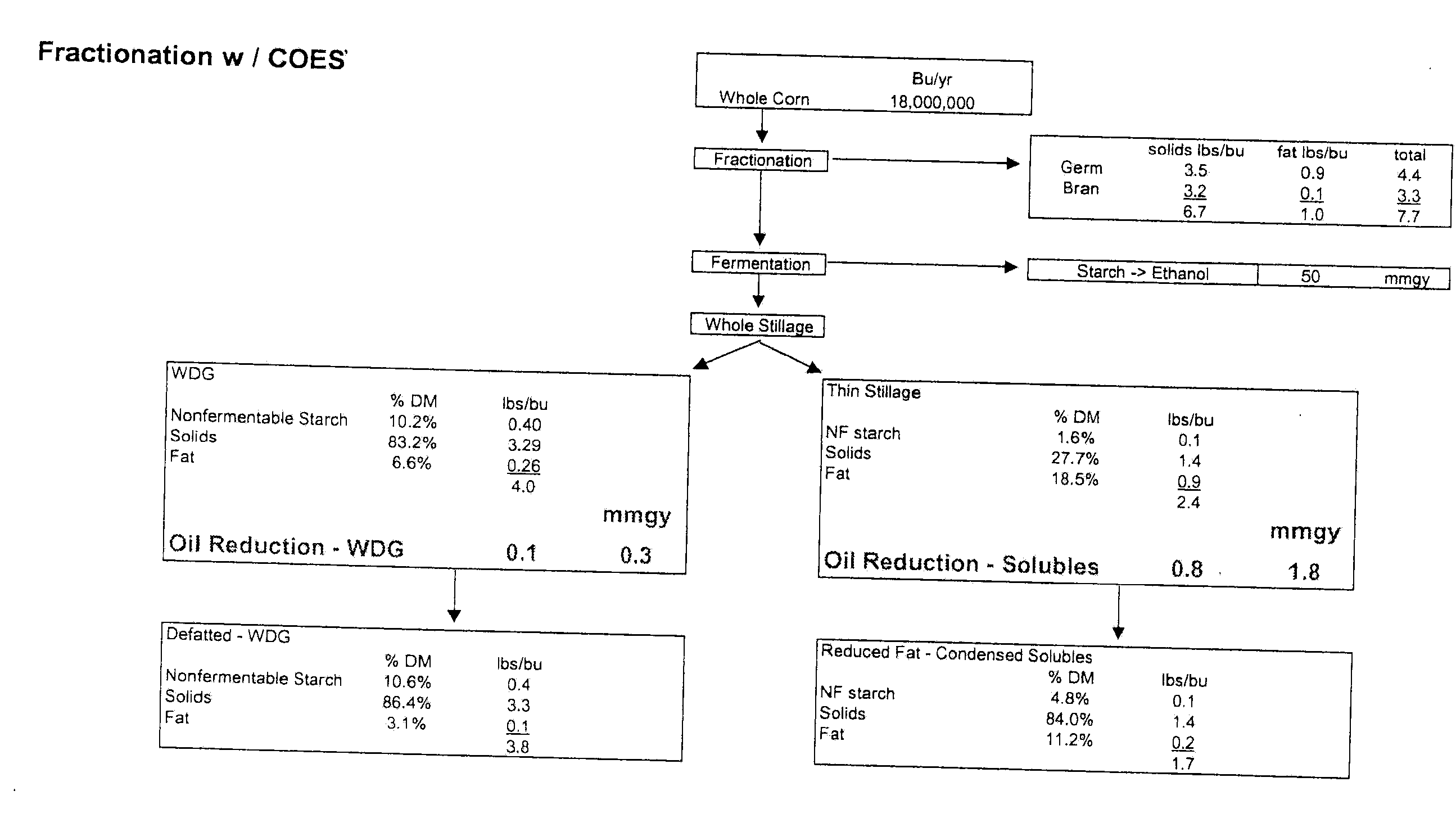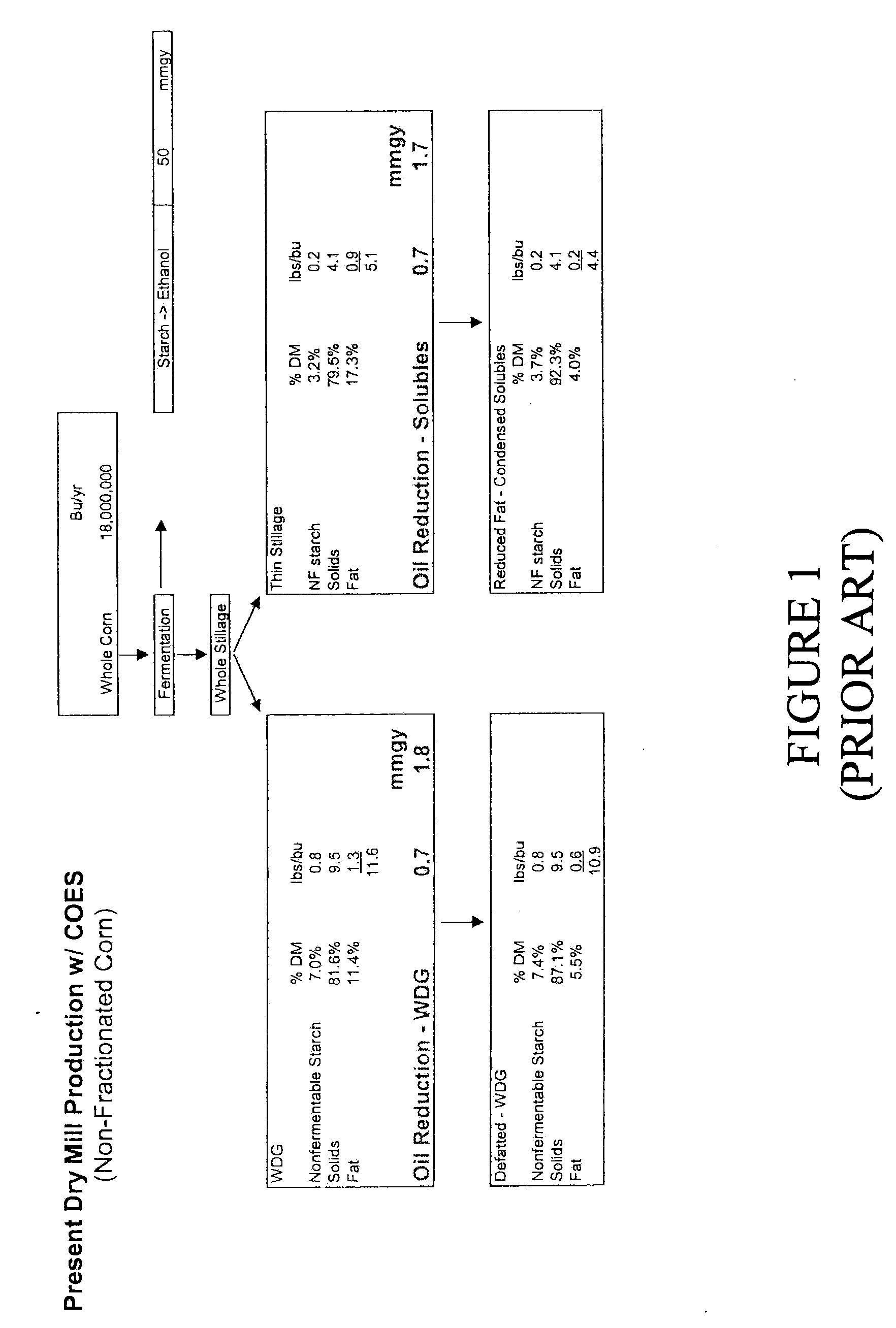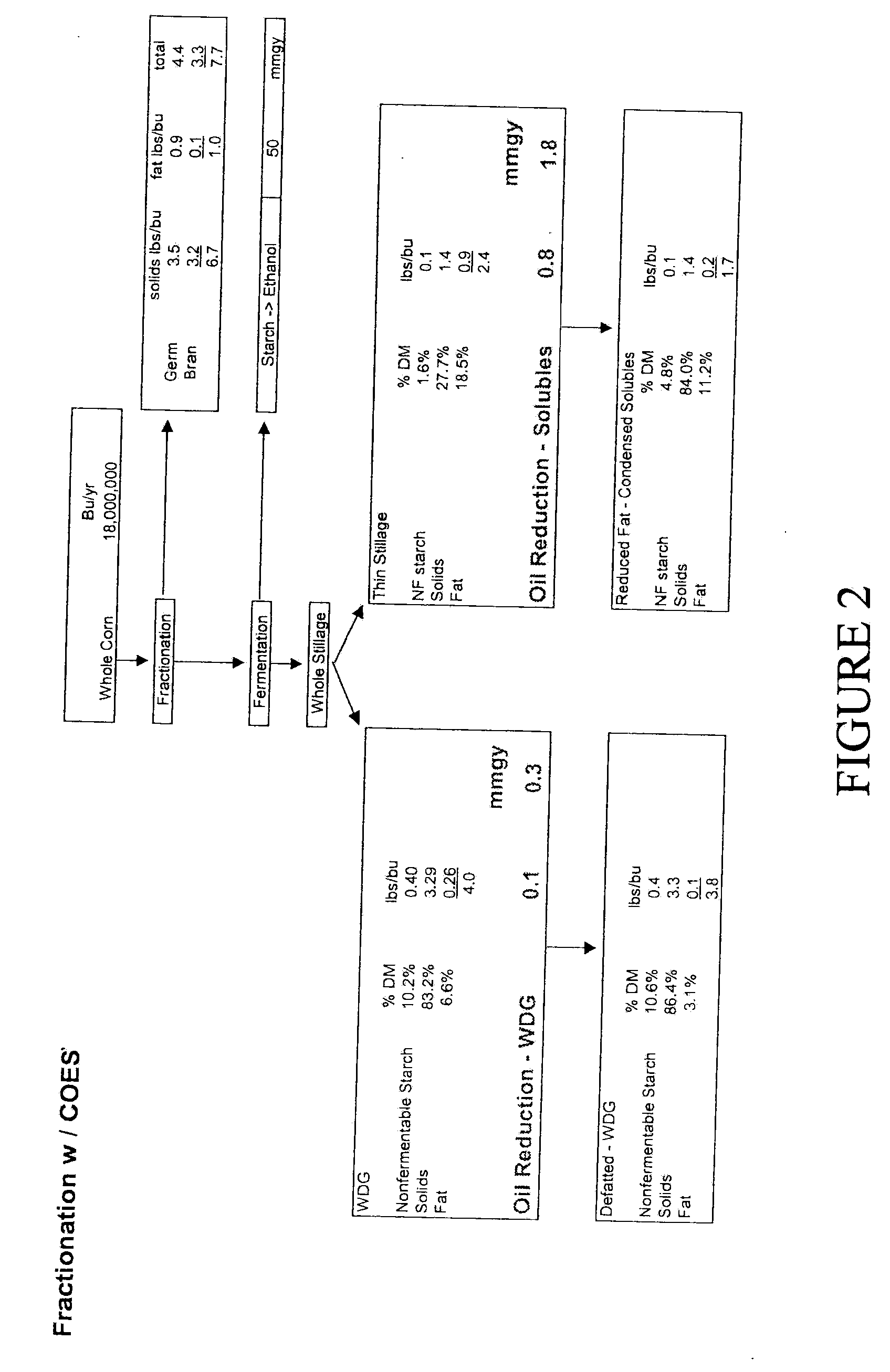Methods for Recovering Oil from a Fractionated Dry Milling Process
- Summary
- Abstract
- Description
- Claims
- Application Information
AI Technical Summary
Benefits of technology
Problems solved by technology
Method used
Image
Examples
Embodiment Construction
[0013]Disclosed herein are processes for recovering oil from a fractionation-based dry mill ethanol production process, also sometimes referred to as a fractionated dry grind process. The process generally includes fractionating the grain to separate the non-fermentables from the starch fraction. The starch fraction is then subjected to fermentation and distillation to produce ethanol, leaving behind whole stillage. The whole stillage is then further processed to produce wet distillers grains and thin stillage. As is known in the art, mechanical separation techniques can be utilized to effect separation of the thin stillage from the wet distillers grains using, for example, a press / extruder, a decanter centrifuge (also simply known as a “decanter”), or a screen centrifuge. As will be discussed in greater detail below, the thin stillage is then processed to recover oil therefrom. Applicants have surprisingly discovered that current fractionation-based dry milling processes produce th...
PUM
| Property | Measurement | Unit |
|---|---|---|
| Temperature | aaaaa | aaaaa |
| Temperature | aaaaa | aaaaa |
| Pressure | aaaaa | aaaaa |
Abstract
Description
Claims
Application Information
 Login to View More
Login to View More - R&D
- Intellectual Property
- Life Sciences
- Materials
- Tech Scout
- Unparalleled Data Quality
- Higher Quality Content
- 60% Fewer Hallucinations
Browse by: Latest US Patents, China's latest patents, Technical Efficacy Thesaurus, Application Domain, Technology Topic, Popular Technical Reports.
© 2025 PatSnap. All rights reserved.Legal|Privacy policy|Modern Slavery Act Transparency Statement|Sitemap|About US| Contact US: help@patsnap.com



